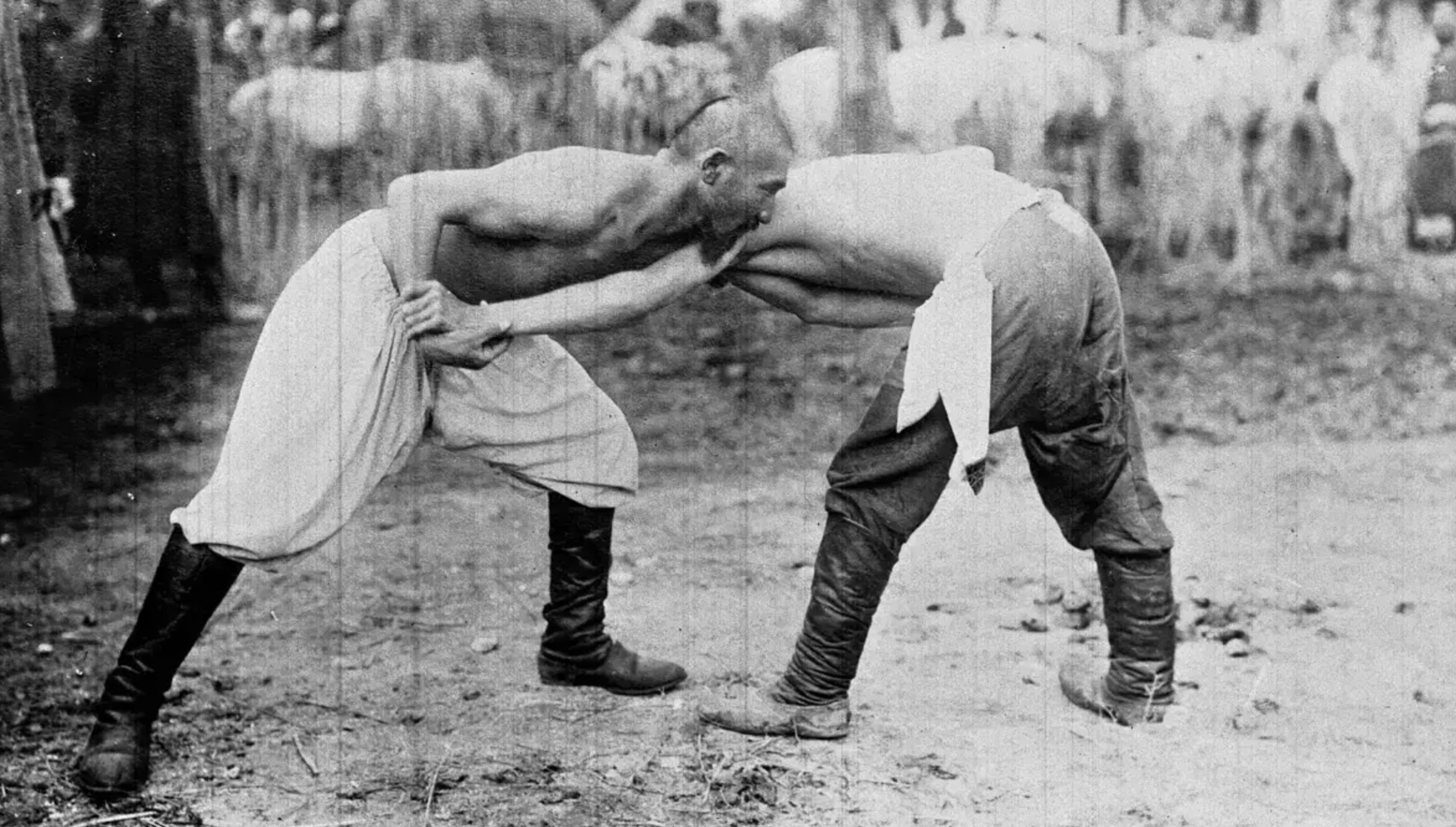ASTANA – Qazaq Kuresi, a type of traditional wrestling, has been a major feature of Kazakh sporting life for centuries, continuing to attract men and women eager to flex their muscles.

Two sportsmen compete during Qazaq Kuresi World Championship in 2022. Photo credit: Qazaq Kuresi Association’s press service
Wrestling has long been one of Kazakh people’s most treasured cultural practices, with no event or celebration complete without Qazaq Kuresi. The names of prominent Kazakh wrestlers, such as Kazhymukan, Baluan Sholak and Bitabar, remain well-known and celebrated to this day.
In the past, Kazakh wrestling was conducted without consideration of weight, rank or age. Competitors, whether large or small, won purely by strength. There were no draws or victories by points. Matches were not time-limited, therefore one of the opponents always emerged as the winner. But, since the first major competition in Kazakh wrestling in 1938, the rules have been formalized to fit modern sports standards.

In the past, Kazakh wrestling was conducted without consideration of weight, rank or age. Photo credit: kazinform.kz
At the fifth World Nomad Games, nations will compete in many variations of traditional wrestling, such as ashtyrmaly aba gureshi (Türkiye’s national belt wrestling) and alysh (the Kyrgyz Republic’s national belt wrestling). The peculiarity of Qazaq Kuresi is that it is conducted in a stand-up position. The goal of the fight is to knock the opponent on their back, with grabs allowed only from the waist and above.
“Kazakh wrestling, as inherited from our ancestors, is fought standing up on feet. In other words, there is no wrestling in parterre or lying down. There is also no foothold, no pain-method. Holding or choking methods are not allowed as well. If any part of the body, like the knee, touches the ground, they stop the fight, stand up and fight standing up,” said Damir Bekbosynov, executive director of the Qazaq Kuresi Association, in an interview with The Astana Times.
The clothing for Qazaq Kuresi also has a peculiar history, dating back to the days of ancient warriors.
“Kazakh wrestling has its own style of clothing. We call it ‘beren.’ Our ancestors used to refer to the armor as “beren-sauyt.” It is said that our warriors wore clothes made of thick fabric under their armor during the war. Those clothes were called ‘beren,’” said Bekbosynov.

Photo credit: Qazaq Kuresi Association’s press service
The Kazakh team is preparing well to fight for national pride and gain an edge on their rivals, said Bekbosynov.
“As of now, 36 countries have applied to participate in the Kazakh wrestling competition. Among them, there are states that fight very well. Wrestlers from Uzbekistan, Mongolia and Georgia are worthy opponents for us. They have always shown a decent rivalry to the Kazakh national team in past competitions,” he said.
There are a lot of wrestlers in Kazakhstan who carry on the sport’s rich national history. The spirit of Qazaq Kuresi is alive and well, according to Bekbosynov, with the tournament attracting wrestlers from different cities and regions.
“Now I can say with certainty that Kazakh wrestling has a mass character. After all, around 4,000-5,000 people compete in the championships, even with a limit in place. And if we rely on the statistics of the Sports and Physical Education Committee, more than 170,000 people are engaged in Kazakh wrestling across the country,” said Bekbosynov.
Kazakh supporters online and at home went wild with excitement when Kazakh wrestler Demeu Zhadrayev reached the finals in men’s Greco-Roman wrestling at the 2024 Paris Olympics. He won the silver medal in the 77-kilogram weight category.
Speaking of wrestling’s benefits, Bekbosynov said the sport could prevent youth from indulging in bad habits and instill good values instead.
“Nowadays, hypodynamia is rampant among children because of smartphones and gaming. Qazaq Kuresi has great educational value and a significant role in instilling the values of our nation. Cultural education and discipline come before sports,” said Bekbosynov.
Wrestling is also beneficial for anyone pursuing physical grace and mental strength. It teaches single-minded dedication, he said.


